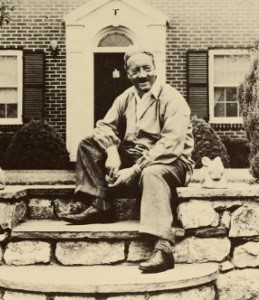Just For Fun: A Collection of Stories & Verses

Illustrator:
Robert Lawson ![]()
![]() Complete Authored Works
Complete Authored Works
Publication:
1940 by Rand McNally
Genre:
Fairy Tales, Fiction
Pages:
64
Current state:
Basic information has been added for this book.
It is under consideration and will be updated when it is evaluated further.
Book Guide
Search for this book used on:
These gay stories and verses, lavishly illustrated by Robert Lawson in his most delightful manner, make a book every young boy and girl will cherish.
Here are amusing tales about wizards, dragons, princes in disguise, and fairy enchantments, mingled with jolly nonsense jingles and charming child poems—all chosen for their appeal to younger boys and girls. Among the distinguished writers for children who are represented here are Padraic Colum, Eunice Tietjens, Beatrice Curtis Brown, Laura E. Richards, Carol J. Sharp, Constance Savery, Anne Brewer, Mildred Plew Meigs, Nancy Byrd Turner, and Florence Page Jaques.
The wide variety of the selections offer ideal scope for Robert Lawson's distinctive style as an illustrator. The humor, fantasy, and rich imaginative quality of his work were never better displayed than they are in Just For Fun.
From the dust jacket
To view an example page please sign in.

![]()
Just For Fun: A Collection of Stories & Verses
Reprinted in 2013 by Dover Publications
Available formats: Paperback
View on Amazon
Dover Children's Classics
From the copyright page: "This Dover edition, first published in 2013, is an unabridged republication of the work originally published by Rand McNally & Company, New York, in 1940."
Please sign in for additional information about this book.
Resource Guide
Episode 70: Why Read Fairy Tales?
Released in 2020 by The Literary Life
Available formats: Streaming Audio
Length: 1 hr. 29 min.
View on the The Literary Life site
"Angelina Stanford and Cindy Rollins tackle the topic of fairy stories, discussing the what, why and how of reading them. Angelina shares the distinctive characteristics of fairy stories in contrast to other types of stories, such as myths. They deal with the question of whether fairy tales are 'escapist', the influence of the Grimm brothers scholarly work on interpreting fairy stories, and allowing the story to unveil its deeper truths without forcing meaning onto it.
Angelina gives an illustration of how to see the gospel messages in fairy tales by talking us through the story of Sleeping Beauty. She refutes the ideas that fairy tales are about human romance or are misogynistic. She also highlights some of the Enlightenment and Puritan responses to fairy tales that still linger with us today. Cindy and Angelina also discuss some common concerns such as the magical, weird, or scary aspects of fairy tales. Angelina also makes a distinction between folk tales, literary fairy tales, and cautionary tales."
Find This Book
Search for this book used on:



